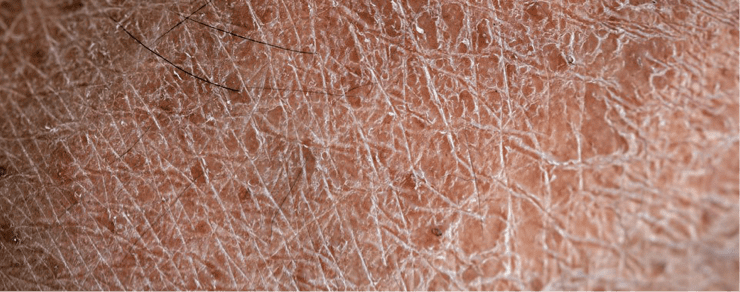|
Cold weather in winter can be very damaging to your skin. That said, spells of cold weather in spring and autumn can be just as detrimental to your skin. When cold winds blow and temperatures plummet your skin will need extra help to remain looking fresh, moist and in good condition. Cold weather can dry your skin out, leaving it susceptible to cold sores and cracks. In winter we tend to move from the cold of the outdoors into warm, often centrally heated, places. This can also be harmful to your skin as winter heating sources can also dry it out.
Diet Remember that, in order to stay healthy, your skin needs a good diet which includes drinking plenty of water. This will help it to look good. Aim to eat a vitamin rich diet, which includes a selection of fresh fruit and vegetables, each day. Limit your intake of alcohol and sweet, sugary drinks and foods. Protection If you are a woman wearing make-up will offer your skin protection. If you prefer not to, or are a man, wear a generous amount of a rich skin moisturising cream each day instead. Even if you wear make-up you will need to apply moisturiser first. When winter winds blast you, make sure that you keep as covered up as possible, with a scarf pulled over the bottom of your face. A warm hat will help keep your forehead protected and gloves will protect your hands. Moisturising your skin Make sure that you do not bathe or shower in water that is too hot or too cold. Either extreme may dry out your skin. Use gentle soaps, especially to wash your face. If you prefer use cleansing pads or cleansing cloths. After bathing exfoliate your skin before applying a generous amount of body lotion. Your hands will need a hand lotion, as this will offer the best type of moisturiser for hands. Feet usually also need a specific cream, in order to fight dry skin on heels and soles. There are many face creams and moisturiser products available these days. Remember that the most expensive will not necessarily give the best results. Check independent on-line reviews before you make your choice. Apply face moisturiser before you apply make-up. If you do not wear make-up at all make sure that the face cream you use is rich and will offer you some protection. In winter our skin is sometimes still under attack from the sun's damaging rays. Ideally use a face cream that offers some protection against the sun. Look for the product's SPF, sun protection factor, rating. Before retiring for the night cleanse your face with an appropriate cream cleanser or lotion. Apply a night cream at bed-time. This will help your skin replenish itself whilst you sleep. Buy night cream as opposed to ordinary day cream. There really is a difference. Both work best when they are used as recommended by the manufacturer. Overall In order to keep your skin well moisturised during cold weather always remember to have a good diet, protect your skin, cleanse, exfoliate and moisturise your skin, as often as possible. If you do not put back into your skin what the cold weather takes out, it will dry out, age and could end up painful. Also: http://www.onewomansomanyblogs.com/how-tos/how-to-prevent-and-treat-dry-skin
0 Comments
Our skin is under constant attack. What with ageing, harsh weather, work, home cleaning substances, tanning, make-up and neglect, is there any wonder that your skin is not always looking its best?
And as winter winds blow and temperatures drop skin dries out further. Although some people suffer from overly oily skin the most common problem that day to day life can cause is dry skin. As Autumn and Winter approach your skin will face a different set of challenges. The Sun in Summer may dry your skin but the cold sharp weather of Winter will do it more damage. In the past men tended to neglect their skin but now both men and women have realised the importance of skin care. If skin becomes extremely dry open wounds and cracks can occur. This can lead to infections and be painful. Your skin does not have to be dry though. Consider a few simple ways to keep your skin looking and feeling healthy. Prevention is always better than having to look for a cure When we are young our skin tends to repair itself quickly. With age the signs of skin damage are often permanent. This means that it is better to:
Take a good look at your skin, in order to assess its present condition. Some people have a combination skin which means that the skin can be oily but have dry patches in places. Take a shower, dry yourself and have a good look at yourself in a full length mirror, if possible. Hold a smaller mirror in your hand so that you can look at your back in the full length mirror. If there are any problem areas of your skin begin a skin repair regime. Underlying health problems Occasionally dry skin will be the result of an underlying health condition such as dermatitis, eczema, psoriasis, or seborrhea. If you have a thyroid condition this may also affect the condition of your skin. If you suspect any such health problems consult your medical practitioner. Knowing the possible causes of dry skin may help you to prevent it There are many possible causes of dry skin such as:
Tips & Warnings
|
Archives
March 2020
Categories
All
|



 RSS Feed
RSS Feed








